#ulrich baer
Text

Deer Black Out, Ulrich Jesse K. Baer
126 notes
·
View notes
Text
Deer Black Out by Ulrich Jesse K Baer
goodreads
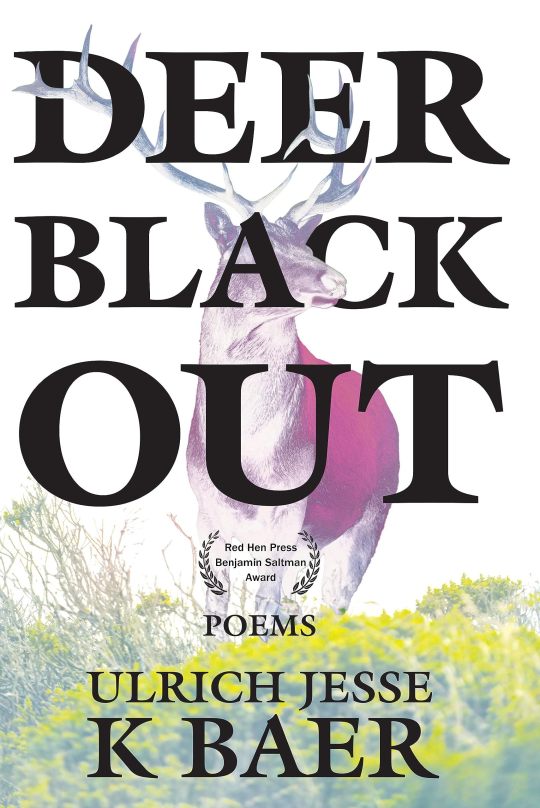
Deer Black Out is a(n obsessional re) mediation of violence and trauma through the trans/coalescence of identities surfacing and resurfacing within a manuscript of serialized poetry, influenced by HD, Zukofsky, and Ronald Johnson. It's sort of like a body, the movement of which you can only recognize emerging within a field of static. Just the outlines. A deer! In ramifying lines, this poetry creates a self-reciprocating dialogue with the very act of self-replication. The language exists as the prosthetic support that co-creates and conditions the Baerself's emergence into the real.
Mod opinion: I found this one through a goodreads friend and I'm so excited to read it at some point! It sounds incredible.
#deer black out#ulrich jesse k baer#polls#trans lit#trans literature#trans books#lgbt lit#lgbt literature#lgbt books#poetry#own voices#trans man#to read
5 notes
·
View notes
Text



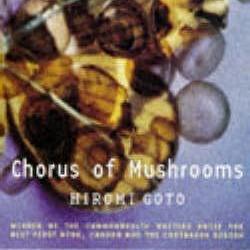

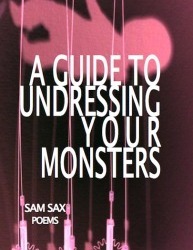
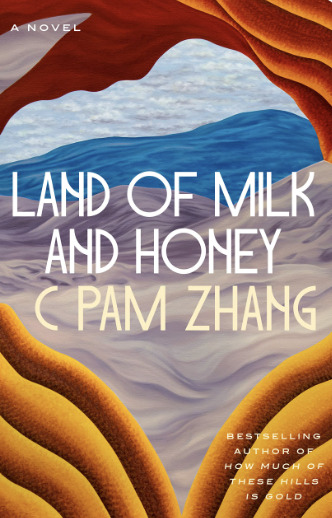
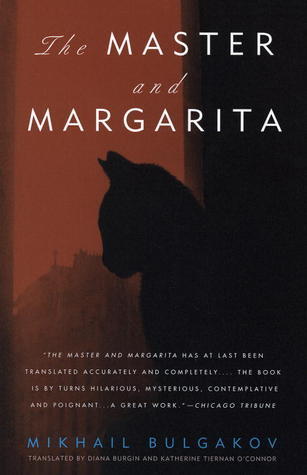
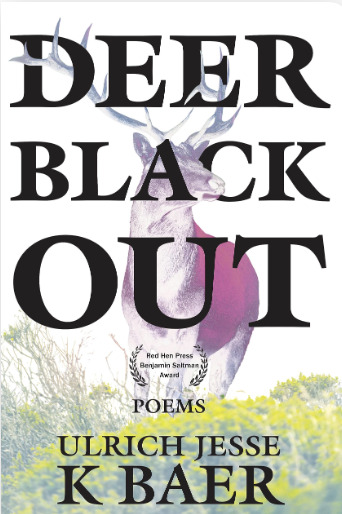
hello all, and welcome to your favorite book rec series! :) here are my favorites of the first quarter of 2024. it was, as always, a tough choice, and several 5-star books had to be left out. to see all of my book reviews/follow my reading life, add or follow me on goodreads (and check out my forthcoming novel on goodreads and storygraph while you're at it). I also recommend all kinds of media on my newsletter, which a couple hundred people seem to like!)
with that, here are my top 9 books (in no particular order) of jan-march 2024!
Raja Shehadeh, Palestinian Walks
Dorothy Allison, Bastard Out of Carolina
Megan Milks, Margaret and the Mystery of the Missing Body
Hiromi Goto, Chorus of Mushrooms
Carla Sofia Ferreira, A Geography That Does Not Hurt Us
Sam Sax, A Guide to Undressing Your Monsters
C Pam Zhang, Land of Milk and Honey
Mikhail Bulgakov, The Master and Margarita
Ulrich Jesse K Baer, Deer Black Out [I was lucky to get an ARC of this one; it drops in April!]
tagging people who are or might be interested below - but feel free to do this for yourself and tag me, i read every single one i'm tagged in and update my tbr accordingly! thanks for reading & loving this series as much as i do :3
@heavenlyyshecomes @communicationissues @fluoresensitive @gwenderqueer @capricornpropaganda @discworldwitches @stephen-deadalus @materialisnt @boykeats @growtiredofpublicvulnerability @flameswallower @closet-keys @fatehbaz @trans-axolotl @bioethicists @aldieb @petesdragon @passerea @lesbianlizzybennet @slowtides @felgueirosa @sadhoc @sawasawako @candiedsmokedsalmon @tirragen @punkkwix @feypact @abstractlesbian @crippleprophet and anyone who wants to!
#lots of tags omg but i know i missed some ppl#so please do your own and pretend i tagged you. i tag everyone in my heart#mine#book rec#id in alt text#my description#described
119 notes
·
View notes
Text

“When writing poetry one is always assisted and even carried away by the rhythm of all things outside, for the lyric cadence is that of nature: of the waters, the wind, the night. But in order to shape prose rhythmically, one has to immerse oneself deeply within oneself and detect the blood’s anonymous, multivaried rhythm. Prose is to be built like a cathedral: there one is truly without name, without ambition, without help: up in the scaffolding, alone with one’s conscience.”
— Rainer Maria Rilke, from “On Language,” The Poet’s Guide to Life: The Wisdom of Rilke, ed. and trans. Ulrich Baer (Modern Library, 2005)
[Alive On All Channels]
#pattern recognition#quotes#poetry#prose#words and writing#Rainer Maria Rilke#On Language#reading and writing
50 notes
·
View notes
Text
Two individuals who are quiet to the same degree have no need to talk about the melody that defines their hours. This melody is what they have in common in and of itself. Like a burning altar it exists between them, and they nourish the sacred flame respectfully with their occasional syllables.
Rainer Maria Rilke - 'On Love,' The Poet’s Guide to Life: The Wisdom of Rilke, translation Ulrich Baer
21 notes
·
View notes
Text
up in the scaffolding, alone with one’s conscience
“When writing poetry one is always assisted and even carried away by the rhythm of all things outside, for the lyric cadence is that of nature: of the waters, the wind, the night. But in order to shape prose rhythmically, one has to immerse oneself deeply within oneself and detect the blood’s anonymous, multivaried rhythm. Prose is to be built like a cathedral: there one is truly without name, without ambition, without help: up in the scaffolding, alone with one’s conscience.”
— Rainer Maria Rilke, from “On Language,” The Poet’s Guide to Life: The Wisdom of Rilke, ed. and trans. Ulrich Baer (Modern Library, 2005) (via Alive on All Channels)
15 notes
·
View notes
Text

“If we wish to be let in on the secrets of life, we must be mindful of two things: first, there is the great melody to which things and scents, feelings and past lives, dawns and dreams contribute in equal measure, and then there are the individual voices that complete and perfect this full chorus.”
— Rainer Maria Rilke, from The Poet’s Guide to Life: The Wisdom of Rilke, ed. & transl. Ulrich Baer (Modern Library, 2005)
9 notes
·
View notes
Text
Rainer Maria Rilke (trans. Ulrich Baer):

11 notes
·
View notes
Text
“You must, Sidie (this is the task that this incomprehensible fate imposes upon you), you must continue his life inside of yours insofar as it was unfinished; his life has now passed onto yours. You, who quite truly knew him, can quite truly continue in his spirit and on his path. Make it the task of your mourning to explore what he had expected of you, had hoped for you, had wished to happen to you.
“If I could just convince you, my dear friend, that his influence has not vanished from your existence… But now he is definitely here, now he is completely free to be here and we are completely free to feel him… Don���t believe that something that belongs to our pure realities could drop away and simply cease.
“All of our true relationships, all of our enduring experiences touch upon and pass through everything, Sidie, through life and death. We must live in both, be intimately at home in both.”
–Rainer Marie Rilke in a 1913 letter to Sidonie Nádherná von Borutín, from The Dark Interval: Letters on Loss, Grief, and Transformation (trans. Ulrich Baer)
#‘now he is definitely here and we are completely free to feel him’#to take this onto your life. to bear it and carry him#rainer maria rilke#it’s dark out#this reminds me of a podcast I listened to today and Henry Scott Holland and that The The song#I wish this book was published earlier
14 notes
·
View notes
Text
"I remember Rodin's exasperation when Francis Jammes repeated Van Tieghem's claim that the seeds of certain flowers had arrived on earth from other stars, trapped inside meteorites. Rodin knew how much we have yet to accomplish here (indeed, what not?!) and very decidedly did not want our curiosity turned beyond and away from what is here. And yet even that is possible: to have the starred skies closely wrapped around one's heart. This is how you experienced it, I think, during those recent evening walks across the meadows when you recalled what you had learned earlier about the stars. I would have liked to have been with you then, to look up next to you and learn something. What period of your childhood may that have been when someone recited to you the names of the stars--who? I realize that I know very little of your childhood. Almost nothing."
An excerpt from Rainer Maria Rilke's letter to Ilse Erdmann, The Dark Interval (tr. Ulrich Baer)
#literature#letters#correspondence#on death#on life#rainer maria rilke#on earth we're briefly gorgeous#(the vibe not the book)#on being#on being human#dark academia#dark academia aesthetic#light academia#light academic aesthetic#romantic academia#romantic aesthetic#chaotic academia#chaotic academia aesthetic#quote#excerpt#translation#translated literature
7 notes
·
View notes
Text

Deer Black Out, Ulrich Jesse K. Baer
63 notes
·
View notes
Text
By: Amna Khalid and Jeffrey Aaron Snyder
Published: Feb 6, 2023
"We affirm both academic freedom and our responsibility to foster an inclusive learning community. Importantly, these values neither contradict nor supersede each other.”So declared a Hamline University faculty resolution asking President Fayneese S. Miller to resign given her handling of a now-infamous controversy over the display of the Prophet Muhammad in an art-history class. While we applaud the faculty for taking a stand against administrative overreach, we think its position on the relationship between academic freedom and inclusion is mistaken. In our viewthere will inevitably be tensions between these two values. And when those tensions arise, academic freedom must prevail — at least, if we want to ensure a college education worthy of its name.
The assertion that inclusion and academic freedom are not in tension is an article of faith for many of those dedicated to promoting campus inclusion. In 2018, the Harvard University Task Force on Inclusion and Belonging released an 82-page report stating that the “values of academic freedom and inclusion and belonging provide each other with synergistic and mutual reinforcement.” According to this report, the two should not be conceived of as “distinct values that must be accommodated to each other” or, worse still, as “antagonistic goals.” This view is central to the frameworks advanced in books such as Ulrich Baer’s What Snowflakes Get Right: Free Speech, Truth, and Equality on Campus, John Palfrey’s Safe Spaces, Brave Spaces: Diversity and Free Expression in Education andSigal Ben-Porath’s Cancel Wars: How Universities Can Foster Free Speech, Promote Inclusion, and Renew Democracy.
When campuses are facing a controversy like Hamline’s, it’s important to recognize that students, faculty, and administrators don’t have the time for careful, philosophical deliberations about the meaning and value of inclusion. Rather, they find themselves in the grip of a system we call DEI Inc.
DEI Inc. is a logic, a lingo, and a set of administrative policies and practices. The logic is as follows: Education is a product, students are consumers, and campus diversity is a customer-service issue that needs to be administered from the top down. (“Chief diversity officers,” according to an article in Diversity Officer Magazine,“are best defined as ‘change-management specialists.’”) DEI Inc. purveys a safety-and-security model of learning that is highly attuned to harm and that conflates respect for minority students with unwavering affirmation and validation.
Lived experience, the intent-impact gap, microaggressions, trigger warnings, inclusive excellence. You know the language of DEI Inc. when you hear it. It’s a combination of management-consultant buzzwords, social justice slogans, and “therapy speak.” The standard package of DEI Inc. administrative “initiatives” should be familiar too, from antiracism trainings to bias-response teamsand mandatory diversity statements for hiring and promotion.
In many ways the Hamline debacle is the ideal case study for laying bare the unavoidable tensions between academic freedom and the DEI Inc. approach to inclusion. The incident has received considerable attention, but allow us to rehearse some of the key events and the language used by the various people involved.
This past fall semester, the syllabus for Erika López Prater’s global-art-history online course contained an advisory alerting students that the class would feature depictions of holy figures, including the Prophet Muhammad; if students had any concerns about the visual content they were invited to contact her. During the class session on Islamic art, Prater offered students an optional exercise: Analyze a 14th-century Islamic painting of Muhammad receiving his first Quranic revelation. Before presenting the painting, she reiterated the content warning and asked students who would prefer not to see the image to turn off their screens.
Despite Prater’s precautions, a Muslim student complained that pictorial depictions of the prophet offended her Muslim sensibilities: “As a Muslim, and a Black person, I don’t feel like I belong, and I don’t think I’ll ever belong in a community where they don’t value me as a member, and they don’t show the same respect that I show them.”
The student complaint set the campus DEI bureaucracy into motion. David Everett, associate vice president for inclusive excellence, made a public statement calling the classroom exercise “undeniably inconsiderate, disrespectful, and Islamophobic.” Because of the incident, Everett said, “it was decided it was best that this faculty member was no longer part of the Hamline community.” Prater was not given any opportunity to explain the rationale behind the class exercise.
In December, President Miller and David Everett sent an open letter to the campus asserting that “appreciation of religious and other differences should supersede when we know that what we teach will cause harm,”and in particular “respect for the observant Muslim students in that classroom should have superseded academic freedom.” After the news made national and international headlines, Miller doubled down, explaining that her decisions were guided by “prioritizing the well-being of our students,” especially by“minimizing harm.”
Miller’s comments at least had the virtue of offering an honest diagnosis of the tension between academic freedom and inclusion. This tension has only ratcheted up in recent years, as colleges make grand promises to create “environments in which any individual or group feels welcomed, respected, supported, and valued.” With institutions promoting such an expansive definition of “inclusion,” we shouldn’t be surprised when they become ensnared in their own rhetoric and policies. How will DEI administrators respond when a Chinese national complains that a political-science discussion about the persecution of Uyghurs is “harmful anti-Chinese propaganda”?Or when a Christian evangelical says her faith was insulted in a contemporary art class after seeing a Robert Mapplethorpe photograph of two men kissing? The permutations are endless and, for professors who teach sensitive or controversial material, alarming.
The American Association of University Professors clearly states that students do not have the right to shield even their “most cherished beliefs” from challenge or scrutiny:
Ideas that are germane to a subject under discussion in a classroom cannot be censored because a student with particular religious or political beliefs might be offended. Instruction cannot proceed in the atmosphere of fear that would be produced were a teacher to become subject to administrative sanction based upon the idiosyncratic reaction of one or more students. This would create a classroom environment inimical to the free and vigorous exchange of ideas necessary for teaching and learning in higher education.
The censorship of ideas because students with particular political beliefs might take offense is precisely what’s happening across the country with anti-critical-race-theory legislation.The notion of harm is central to these “divisive concepts” laws, which have used Trump’s now-revoked 2020 Executive Order 13950 as a template.Among the things prohibited in this EO was that “any individual should feel discomfort, guilt, anguish, or any other form of psychological distress on account of his or her race or sex.”That white students could shut down discussions of “white privilege” and “structural inequality” because they make them uncomfortable is a most egregious affront to academic freedom. Laws like Florida’s “Stop WOKE Act” underscore that policies oriented around harm-avoidance in the classroom are educational dead ends.
To safeguard high-quality teaching that powerfully and accurately communicates our disciplines and fields, academic freedom must be vigorously defended. Students, DEI administrators and other campus stakeholders should understand that professorshave the right to decide what and howto teach based on their academic expertise and their pedagogical goals. They should also know that there is no academic freedom without academic responsibility. Academic freedom is not a license to mouth off or teachwhatever material suits our fancy. Moreover, when thorny issues arise pertaining to classroom instruction, we have a responsibility to listen to students’ concerns and take them seriously. This does not mean, however, that students should be able to dictate the curriculum.
The Hamline case should serve as a wake-up call for anyone who cares about classroom teaching, critical thinking, and the future of higher education. Some may see this controversy as an exception or an outlier. It’s not. It’s a bellwether of how DEI Inc. is eroding academic freedom. Let’s not forget it took an outpouring of sustained, high-publicity resistance, not to mention a lawsuit, for Hamline to soften its charge of “Islamophobia” against Prater and affirm its commitment to academic freedom.
When institutions proclaim that academic freedom and inclusion coexist in a kind of synergistic harmony, they are trafficking in PR-driven wishful thinking. In the hardest cases, there is no way of upholding an “all are welcome here” brand of inclusion while simultaneously defending academic freedom. Instead, we should turn to the wise words of Hanna Holborn Gray, former president of the University of Chicago: “Education should not be intended to make people comfortable, it is meant to make them think.”
[ Via: https://archive.is/xBXiq ]
#Hamline University#diversity equity and inclusion#diversity#equity#inclusion#islamophobia#academic freedom#academic integrity#corruption of education#higher education#DEI Inc.#DEI industry#religion is a mental illness
6 notes
·
View notes
Text

© Ulrich Baer, Germany, 2024. Mann in Portugal.
0 notes
Text
If we wish to be let in on the secrets of life, we must be mindful of two things: first, there is the great melody to which things and scents, feelings and past lives, dawns and dreams contribute in equal measure, and then there are the individual voices that complete and perfect this full chorus.”
R.M. Rilke
~Poet’s Guide to Life (trans. Ulrich Baer)
Happy Birthdy away from home,Jeff
0 notes
Text
Alien Light - Ulrich Jesse K Baer
Emerge fitful—staticky in coherence. Yr tacit, rough measures, jerky volts polyrhythmic
Autopoetic gesture dressage—to take the habit
Pathocartograph. Transverse space rescinded letters / leaned toward—potentiality’s sweep grammar, noxious reflex bound. To repeat—dashes
A midcrises—cryopoetic tombs. Orbital ambit, affect embedded slopes knelled.
The processual congelation
Fantasmic, psuedoactive. What structured yr lived affections
You were gestures at the tablenight, misrecognition the mirror blends: synchronies, to expose the unstable forces coalesced in a shared Nervous System
Sensual idioms, distributing presence. What can one intuit togather folds
Emanate, radiocesiumbled, language decays
Meaning
You felt
Horses, here
Leaving those who lack resonance: boy trau,, the river canyons echo
Stormcaressed—a floodflows. Desiring: deprivation procedures. To be an object of. Collective lust, proliferated its spread, folds liquidated assets You begin by selling the tonality of this Song
A boyfaun crouched in the brush. Captivated voyeurs witnessed his unfolding-torso crossing time. Fords becoming linen wounds unspilled proselytizing: This primal scene
You lingeredin, awaiting a benediction. Reception invoked God found no
intercession, in the valleys, you furled out treemist gauged: eternitydredged searching searching for the cure
Pallative, psalmodizing refrains shaped to the space that diminished them
0 notes
Text
Ulrich Baer and Smaran Dayal on American Literature
Ulrich Baer is University Professor at New York University where he teaches literature and photography. He has published books on poetry, photography, and culture, and written for the New York Times, the New York Review of Books, and the Los Angeles Book Review. His translations of poet Rainer Maria Rilke’s letters are available as audiobooks read by Ethan Hawke and Rosanne Cash. He hosts the ideas podcasts, Think About It and The Proust Questionnaire, and has published editions of numerous classic books with Warbler Press, including Pride and Prejudice, The Scarlet Letter, The Great Gatsby, Beyond Good and Evil, Heart of Darkness, and others. Smaran Dayal is a Ph.D. candidate in Comparative Literature at New York University, where he is writing a dissertation on literary Afrofuturism. He was the recipient of the Rosa Luxemburg Foundation’s Masters Scholarship and the European Council’s Erasmus Mundus Fellowship. He is one of the co-organizers of the NYU Postcolonial, Race and Diaspora Studies Colloquium, co-translator of the book The Queer Intersectional in Contemporary Germany (2018) and co-editor of the anthology of American literature, Fictions of America: The Book of Firsts (2020). His writing has previously appeared or will soon appear in The Los Angeles Review of Books, the Harvard Review, Social Text, Citizenship Studies, Interventions, and the Journal of Postcolonial Writing.
About Mackenzie Amyx
Gen Z authority.
Website: http://mackenzieamyx.com/ Instagram: @mackenzieamyx YouTube: https://www.youtube.com/channel/UC3lo5qcDh5MRhzjqieg7szg?view_as=public
Check out this episode!
0 notes